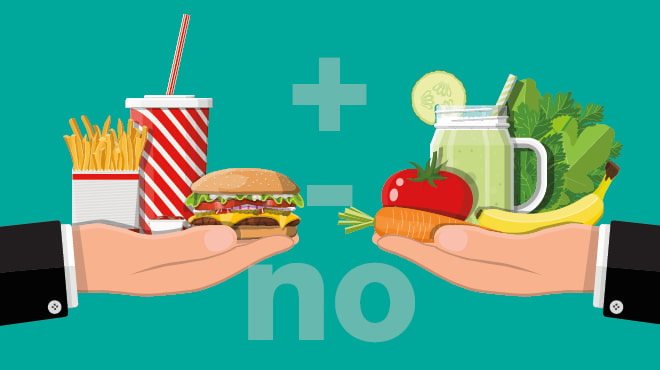Recent Posts
-

-
 Patient StoriesA lifesaver saved: An EMS veteran’s journey from rescue to recoveryNovember 14, 2025
Patient StoriesA lifesaver saved: An EMS veteran’s journey from rescue to recoveryNovember 14, 2025 -

Fast facts on fats and heart health

All food sources you may think of as fats, such as butter, shortening and oils, are made up of fatty acids. Fatty acids fall into three categories: monounsaturated, polyunsaturated and saturated. While oils and fats contain a combination of these three types of fatty acids, they're classified by the fatty acid with the highest content percentage. For example, olive oil is made mainly of monounsaturated fatty acids.
Fats perform differently in cooking and baking, and how they affect your health. Choose monounsaturated and polyunsaturated fats, such as olive and canola oils, over saturated fats, like butter and lard, to minimize your risk of heart disease.
Here are some fast facts about each of the main types of fats:
- Monounsaturated fats
Monounsaturated fats are liquid at room temperature but become semi-solid or cloudy in the refrigerator. When substituted for saturated fats, monounsaturated fats can help to improve blood cholesterol levels and reduce the risk of heart disease. Olive oil and peanut oil are examples of monounsaturated fats. - Polyunsaturated fats
Polyunsaturated fats are always liquid, even when refrigerated. When used in place of saturated fats, they can help improve blood cholesterol levels and reduce the risk of heart disease. Omega-3 fatty acids are polyunsaturated fats that lower triglyceride levels, improve heart health and provide anti-inflammatory benefits. Canola oil, sunflower oil and walnut oil are examples of polyunsaturated fats. - Saturated fats
Saturated fats are solid at room temperature. A diet high in saturated fats has been linked with elevated cholesterol levels and increased risk for heart disease, so it's best to limit your use of them. Butter, lard, palm oil and coconut oil are examples of saturated fats. - Hydrogenated fats
Hydrogenated fats are solid at room temperature. Hydrogenation is the chemical process that changes liquid oils into solid fats. Fully hydrogenated oils are primarily saturated fat. A diet high in saturated fats has been linked with elevated cholesterol levels and increased risk of heart disease, so try to reduce your use of them. Shortening, premade pie crusts and refrigerated doughs like biscuits and rolls are examples of hydrogenated fats. - Trans fats
Most trans fats are formed through an industrial process that adds hydrogen to vegetable oil, which causes the oil to become solid at room temperature. Trace amounts also occur naturally in some meat and dairy products. Trans fats raise your low-density lipoprotein (bad) cholesterol and lower your high-density lipoprotein (good) cholesterol. High LDL, along with low HDL levels, can increase your risk for heart disease and stroke. These fats are so unhealthy that the Food and Drug Administration has prohibited food manufacturers from adding the major source of artificial trans fats — partially hydrogenated vegetable oils — to foods and beverages.
Healthy fats to keep on hand
If you have limited pantry space and are budget-conscious, these three oils will cover your basic cooking and baking needs:
- Olive oil
In addition to being a source of monounsaturated fats, extra-virgin olive oil is also high in antioxidants called polyphenols that have been linked to heart health. Olive oil works well for roasting or sautéing vegetables and making homemade salad dressing. - Canola oil
The neutral flavor and high smoke point make canola oil an excellent choice for baking and sautéing. Most canola oil is highly refined and has a relatively long shelf life. It's incredibly versatile and can be used for sautéing, roasting, baking and making salad dressings. - Walnut oil
Although this specialty oil is more expensive than olive or canola oil, walnut oil has a rich, nutty flavor and boasts heart-healthy omega-3s. Walnut oil, as with all nut oils, has a short shelf life. Buy a small bottle and store it in your refrigerator for up to three months. Its nutty flavor only works in some dishes. The best uses include salad dressings — try a blend of canola and walnut oils — or to give baked goods a light walnut flavor.
Using heart-healthy oils
If you're changing to a healthier oil, here are two recipes to get you started:
Citrus vinaigrette
By Mayo Clinic
Serves 8
Making salad dressings at home lets you control the ingredients. Drizzle this sweet-tangy dressing over mixed fruit or a salad of mixed greens, orange tidbits, cranberries and walnuts.
1 cup water
1/2 cup orange juice concentrate
1/2 cup canola oil
1/4 cup rice wine vinegar
2 tablespoons honey
1 tablespoon fresh thyme
1/4 teaspoon salt
Pinch of ground black pepper
In a blender, mix all ingredients until smooth. Serve immediately. Place leftovers in a container in the refrigerator for up to two weeks. Shake well before use.
Nutrition per 2-tablespoon serving: 143 calories, 14 grams total fat, 1 gram saturated fat, 9 grams monounsaturated fat, 89 milligrams sodium, 7 grams total carbohydrate, 0 grams fiber, 0 grams protein.
Tomato basil pesto sauce
By Mayo Clinic
Serves 15
Make the pesto sauce and freeze in containers portioned for your family.
1/4 cup olive oil
4 garlic cloves, minced
1/4 cup red wine vinegar
8 cups diced Roma tomatoes
1/2 cup tomato paste
12 fresh basil leaves, chopped
1 tablespoon sugar
1/2 teaspoon salt
1/4 teaspoon ground pepper
1/2 cup grated Parmesan cheese
Heat a large saucepan to medium-low heat; add the oil. When the oil is heated, add the garlic and sauté until lightly golden. Add the vinegar and sauté for an additional 2 minutes. Stir in the tomatoes, tomato paste, basil, sugar, salt and pepper. Bring the mixture to a simmer and stir occasionally until the tomatoes break down, about 8 to 10 minutes. Remove the pan from the heat and let it cool slightly. Place the sauce and cheese in a food processor and process until smooth. Taste the sauce and adjust the seasonings as needed.
Nutrition per 1/2-cup serving: 85 calories, 4 grams total fat, 1 gram saturated fat, 3 grams monounsaturated fat, 344 milligrams sodium, 8 grams total carbohydrate, 0 grams total sugars, 1 gram fiber, 2 grams protein.
By Mayo Clinic Health System staff.


